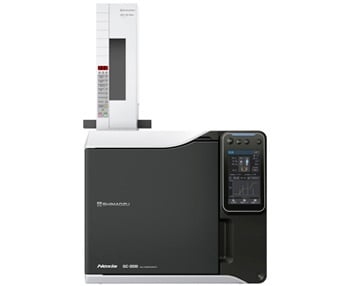Analysis of Glycerin in Biodiesel Fuel
Due to increased awareness of global warming and reducing CO2 emissions, the use of biodiesel fuels made from vegetable oils has become more common. Biodiesel is normally created by adding methanol to an oil to cause fatty acid methyl esterification. The residue from this production process includes free glycerin and mono-, di-, tri-glycerides. In the US and Europe, standards and measuring procedures are defined in relation to biodiesel quality.
This shows the gas chromatography (GC) analysis of glycerin in biodiesel, conforming to ASTM D6584.

Gas Chromatograph (GC)

A gas chromatograph (GC) is an instrument that measures the content of various components in a sample. The sample solution injected into the instrument enters a gas stream, which transports the sample into a separation tube known as the "column." Helium or nitrogen is used as this so-called carrier gas. The various components are separated inside the column, and a detector measures the quantity of the components that exit the column. To measure a sample with an unknown concentration, a standard sample with a known concentration is injected into the instrument. The standard sample peak retention time (appearance time) and area are compared to the test sample to calculate the concentration.




